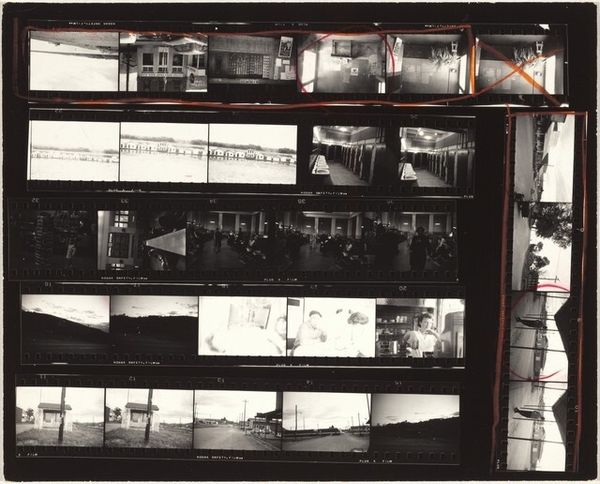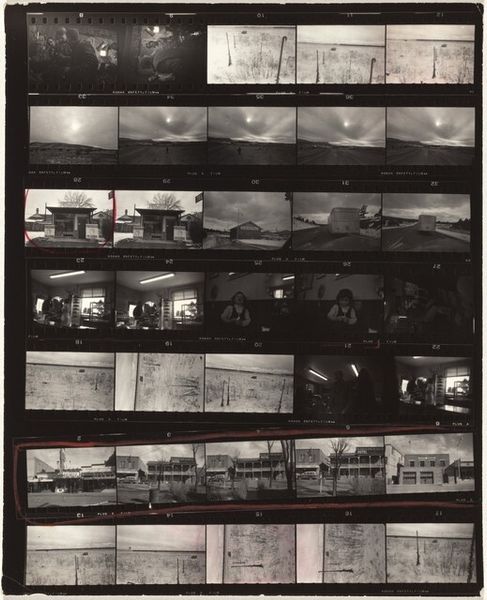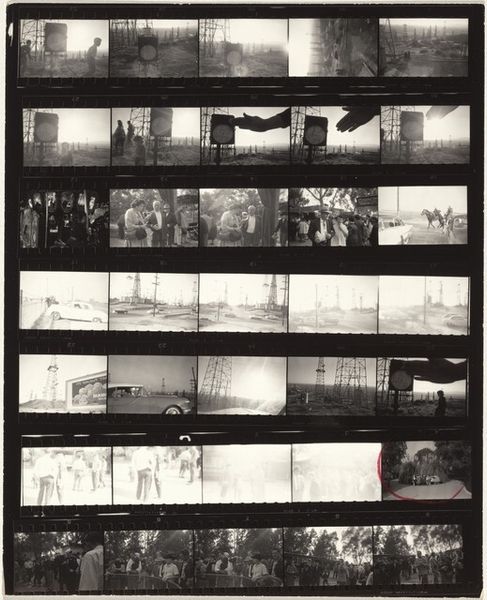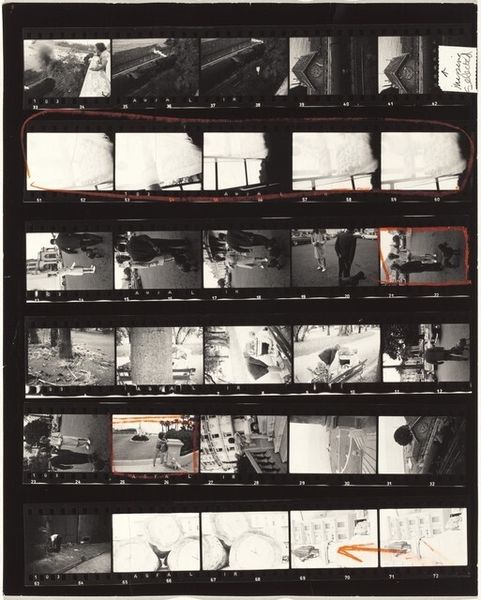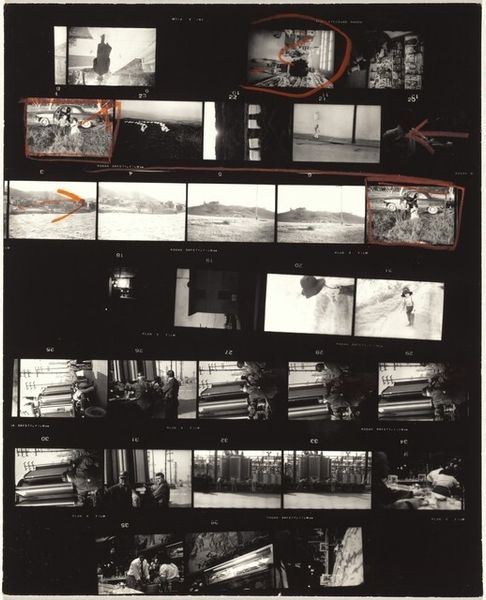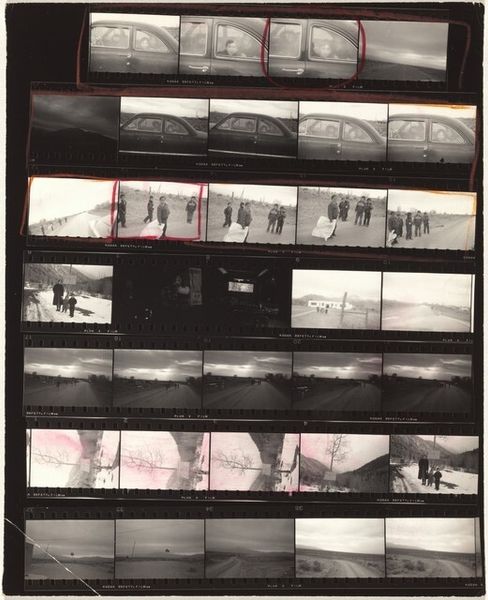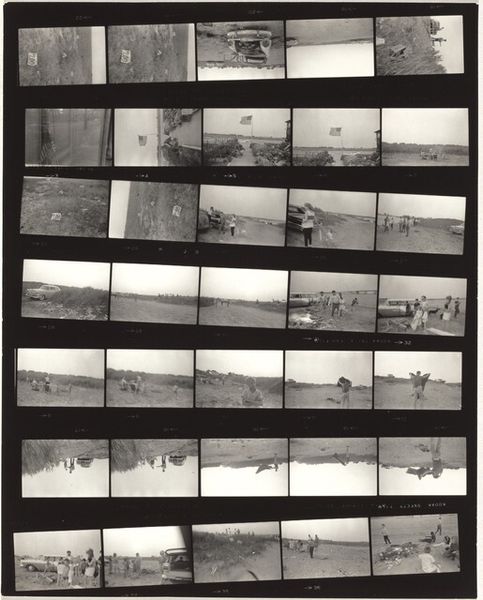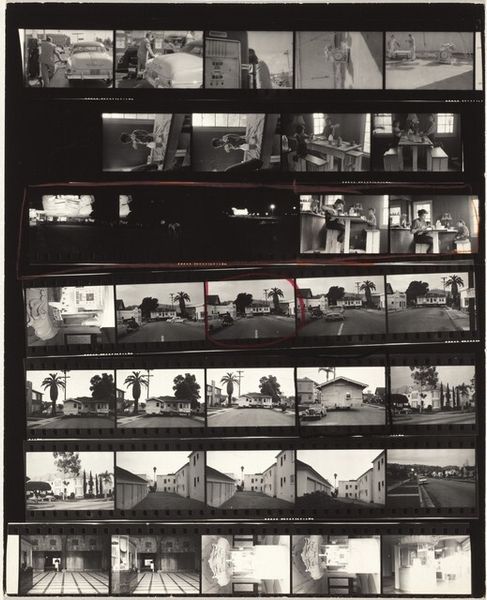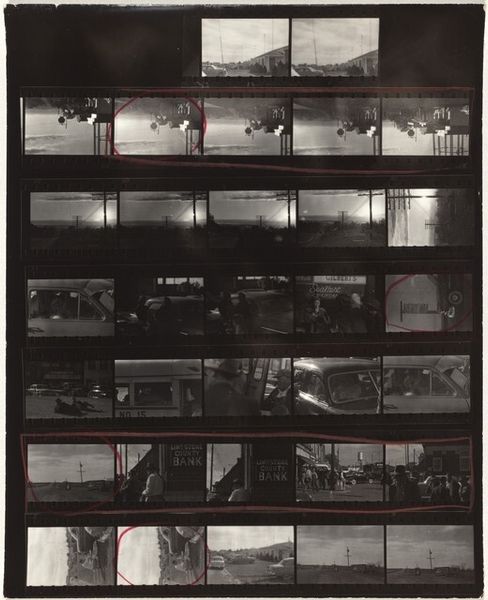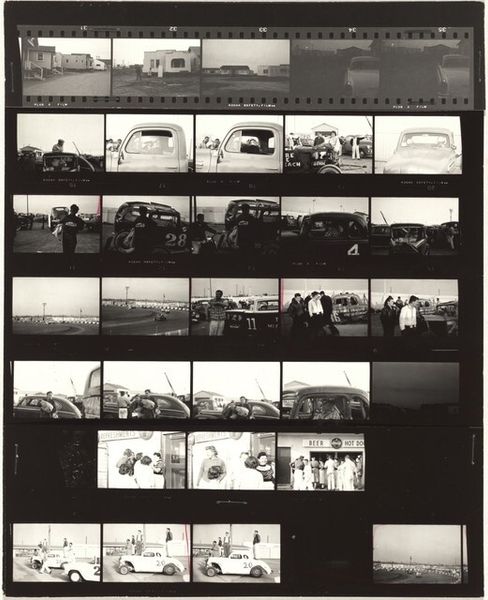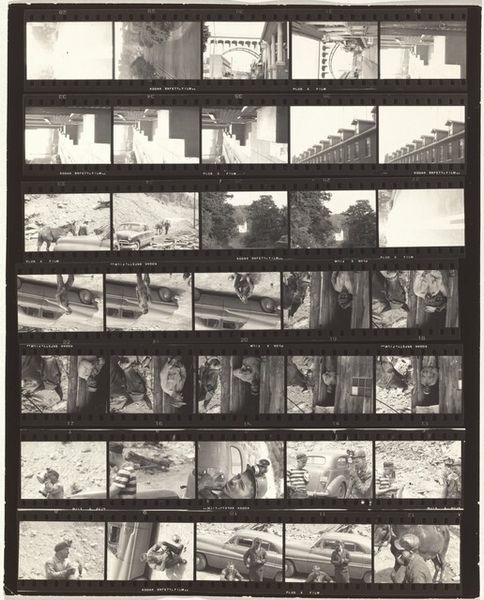
photography, gelatin-silver-print
#
portrait
#
film photography
#
landscape
#
social-realism
#
street-photography
#
photography
#
gelatin-silver-print
#
modernism
Dimensions: overall: 25.3 x 20.5 cm (9 15/16 x 8 1/16 in.)
Copyright: National Gallery of Art: CC0 1.0
Curator: This is Robert Frank’s “Guggenheim 396—Gallup, New Mexico, and Kingman, Arizona,” a gelatin silver print from 1955. The contact sheet format provides insight into Frank's working method and vision. Editor: It’s really interesting to see all the images together like this, instead of just one finished photograph. There’s a strong sense of Americana, almost like a documentary film on a single page, with images of diners, desolate landscapes, and sparse interiors. How do you interpret Frank’s selection of images in this contact sheet within its historical context? Curator: Frank’s work often grapples with the undercurrents of American society, challenging the idealized image prevalent in the media. The inclusion of empty landscapes and the diner scene suggest a commentary on the isolation and sometimes stark reality experienced by many Americans, contrasting with the postwar economic boom. Notice the repetition, almost obsessive, in photographing the same motel room. What does that repetition evoke for you? Editor: It's unsettling, almost claustrophobic. Seeing it repeated like that emphasizes the sameness, the anonymity of these places. The motel room, the highway… It speaks to a loss of identity and individualism, doesn't it? Curator: Precisely. And consider Frank's position as a Swiss immigrant. He occupied a unique vantage point, both inside and outside American culture, allowing him to critique its complexities with a critical eye. The images can be understood as his reflection upon the themes of alienation and disenchantment that simmered beneath the surface of 1950s America. How do you feel that perspective affects our reading of the work? Editor: It adds a layer of vulnerability and empathy. He's not just documenting; he seems to be connecting with something deeper, something melancholic in the American experience. This feels like more than just photography; it’s a powerful statement. Curator: Indeed. It challenges the romanticized narratives we often tell ourselves, offering a glimpse into the more complicated realities of that era. Editor: It really makes you think about whose stories are being told and how. Thanks, I learned so much.
Comments
No comments
Be the first to comment and join the conversation on the ultimate creative platform.

